
Duke of Richmond is a title in the Peerage of England that has been created four times in British history. It has been held by members of the royal Tudor and Stuart families.
Earl of March is a title that has been created several times, respectively, in the Peerage of Scotland and the Peerage of England. The title derives from the "marches" or borderlands between England and either Wales or Scotland, and it was held by several great feudal families which owned lands in those districts. Later, however, the title came to be granted as an honorary dignity, and ceased to carry any associated power in the marches.

Baron Berners is a barony created by writ in the Peerage of England.

Baron Stafford, referring to the town of Stafford, is a title that has been created several times in the Peerage of England. In the 14th century, the barons of the first creation were made earls. Those of the fifth creation, in the 17th century, became first viscounts and then earls. Since 1913, the title has been held by the Fitzherbert family.

Earl of Darnley is a hereditary title that has been created three times, twice in the Peerage of Scotland and once in the Peerage of Ireland.
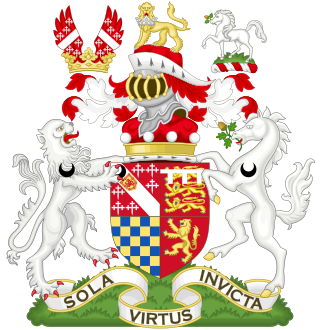
Baron Howard of Glossop, in the County of Derby, is a title in the Peerage of the United Kingdom, since 1975 a subsidiary title of the dukedom of Norfolk. It was created in 1869 for the Liberal politician Lord Edward Howard, the second son of Henry Fitzalan-Howard, 13th Duke of Norfolk. His grandson, the third Baron, married Mona Stapleton, 11th Baroness Beaumont. Their eldest son, Miles, succeeded his mother in the barony of Beaumont in 1971 and his father in the barony of Howard of Glossop in 1972. In 1975 he also succeeded in the dukedom of Norfolk on the death of his cousin, Bernard Fitzalan-Howard, 16th Duke of Norfolk. The two baronies are now subsidiary titles of the dukedom of Norfolk. See this title for further history of the peerages.

The Earl or Mormaer of Lennox was the ruler of the region of the Lennox in western Scotland. It was first created in the 12th century for David of Scotland, Earl of Huntingdon and later held by the Stewart dynasty.
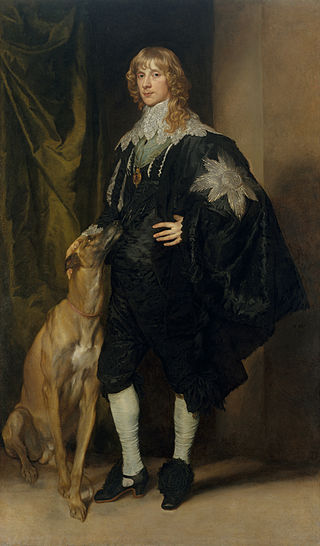
James Stewart, 1st Duke of Richmond, 4th Duke of Lennox KG, lord of the Manor of Cobham, Kent, was a Scottish nobleman. A third cousin of King Charles I, he was a Privy Councillor and a key member of the Royalist party in the English Civil War. In 1641–42, he served as Lord Warden of the Cinque Ports. He spent five months in exile in 1643, returning to England to defend the city of Oxford for the king.

Ivo Francis Walter Bligh, 8th Earl of Darnley, styled The Honourable Ivo Bligh until 1900, lord of the manor of Cobham, Kent, was a British nobleman, parliamentarian and cricketer.

Charles Stewart, 3rd Duke of Richmond KG was an English peer who was the fourth cousin of Charles II of England, being both descended in the male line from John Stewart, 3rd Earl of Lennox.
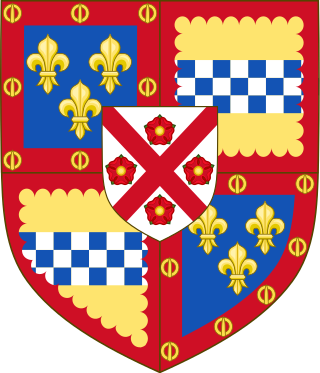
Esmé Stewart, 3rd Duke of Lennox, KG, 7th Seigneur d'Aubigny, lord of the Manor of Cobham, Kent, was a Scottish nobleman and through their paternal lines was a second cousin of King James VI of Scotland and I of England. He was a patron of the playwright Ben Jonson who lived in his household for five years.

Edward Bligh, 2nd Earl of Darnley, lord of the Manor of Cobham, Kent, was an Irish peer born of an English family who resided in Kent.
George Hamilton, 3rd Earl of Abercorn died unmarried in Padua on a voyage to Rome. He was succeeded by Claud Hamilton, heir of Claud Hamilton, 2nd Baron Hamilton of Strabane, second son of the 1st Earl of Abercorn.

Lord Bernard Stewart was a Franco-Scottish nobleman and a third cousin of King Charles I of England, both being descended in the male line from John Stewart, 3rd Earl of Lennox. He served as a Royalist commander in the English Civil War, during which he was killed aged 22 and unmarried.
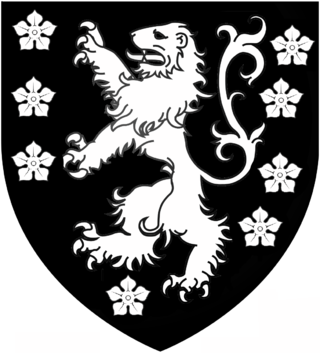
Katherine Clifton, 2nd Baroness Clifton, was an English-born Scottish peer.
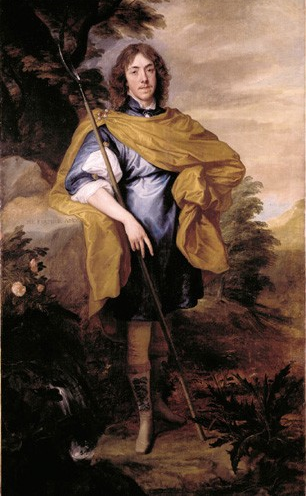
Lord George Stewart, 9th Seigneur d'Aubigny was an Anglo-Scottish nobleman of French descent and a third cousin of King Charles I of England. He supported that king during the Civil War as a Royalist commander and was killed, aged 24, at the Battle of Edgehill in 1642.

Edward Bligh, 5th Earl of Darnley, FRS, styled Lord Clifton until 1831, lord of the Manor of Cobham, Kent, was a British peer and politician.
John Bligh, 1st Earl of Darnley, was an Irish peer born of an English family.
Edward Henry Stuart Bligh, 7th Earl of Darnley, styled Lord Clifton until 1896, lord of the Manor of Cobham, Kent, was an English landowner and aristocrat who played first-class cricket for Kent and for other amateur sides in the 1870s. He was born and died at the English home of the Earls of Darnley, Cobham Hall, at Cobham, near Gravesend in Kent.

Theodosia Bligh, 10th Baroness Clifton, was an English peeress, born Theodosia Hyde.














